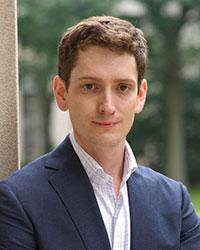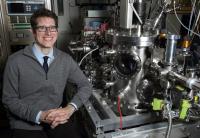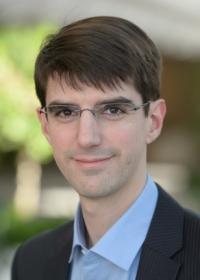Spring 2017 Colloquium Series
Inside the Iran Deal: The Making and Future of a Historic Agreement
SPEAKER: R. SCOTT KEMP NORMAN C. RASMUSSEN ASSOCIATE PROFESSOR OF NUCLEAR SCIENCE AND ENGINEERING MIT LABORATORY FOR NUCLEAR SECURITY AND POLICY MASSACHUSETTS INSTITUTE OF TECHNOLOGY (MIT) DATE/TIME: MON, 02/15/2017 – 4:00PM TO 5:00PM LOCATION: 3105 ETCHEVERRY HALL Spring 2017 Colloquium Series Abstract: Scott Kemp of MIT will tell the story of the technical negotiations behind the Iran nuclear…
Read MoreHigh-flux helium and hydrogen plasma exposure of materials for magnetic fusion
SPEAKER: ROBERT D. KOLASINSKI ENERGY INNOVATION DEPARTMENT SANDIA NATIONAL LABORATORIES DATE/TIME: MON, 02/06/2017 – 4:00PM TO 5:00PM LOCATION: 3105 ETCHEVERRY HALL Spring 2017 Colloquium Series Abstract: It is widely recognized that the science of plasma-material interactions (PMI) is central to the realization of magnetic fusion as an energy source. Predicting how materials behave in the extreme environments characteristic…
Read MoreOverview of the FASt TEst Reactor (FASTER)
SPEAKER: FLORENT HEIDET DATE/TIME: MON, 01/30/2017 – 4:00PM TO 5:00PM LOCATION: 3105 ETCHEVERRY HALL Spring 2017 Colloquium Series Abstract: Over the past couple years Argonne National Laboratory has been developing a FASt TEst Reactor as part of the DOE-NE Advanced Reactor Campaign in order to address the growing needs for fast neutron irradiation capabilities. FASTER is a 300…
Read MoreDetailed Modeling of Fission
SPEAKER: RAMONA VOGT NUCLEAR AND CHEMICAL SCIENCES DIVISION, LLNL PHYSICS DEPARTMENT, UC DAVIS DATE/TIME: MON, 01/23/2017 – 4:00PM TO 5:00PM LOCATION: 3105 ETCHEVERRY HALL Spring 2017 Colloquium Series Abstract: For many years, the state of the art for treating fission in radiation transport codes has involved sampling from average distributions. In these average fission models energy is not…
Read More


